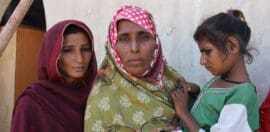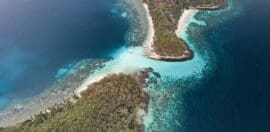NGOs urge Australia to step up on foreign aid spending

13 May 2019 at 4:11 pm
Labor has promised to restore the nation’s foreign aid budget if it wins the upcoming election, but aid groups say the opposition’s pledged increases still fall short of what is needed for Australia to do its fair share internationally.
The opposition’s release of costings on Friday revealed plans to ramp up aid funds by $1.6 billion over four years, which would raise spending from 0.21 per cent of gross national income (GNI) currently to 0.22 per cent of GNI by 2022-23.
Aid groups have welcomed the funding boost but are concerned that Labor’s costings fall well below the party’s stated GNI target of 0.5 per cent – the level of aid spend recently recommended by the bipartisan committee for foreign affairs.
Australian Council for International Development CEO Marc Purcell said the trajectory outlined by Labor would not achieve this target in any reasonable timeframe.
“The increases would simply be too slow to reach the 0.5 per cent funding target. Australia needs an accelerated timetable if it’s to reach 0.5 per cent, and the internationally agreed goal of 0.7 per cent by 2030,” Purcell said.
“Building mutually beneficial partnerships with other nations through development cooperation is crucial in tackling common global challenges like climate change, and underpins the security, jobs and exports which Australia relies upon.”
Foreign aid spending under a Labor government would rise by $30 million next financial year, followed by increases of $220 million in 2020-21, $410 million in 2021-22 and $520 million in 2022-23.
Labor would also put an extra $380 million into the United Nations High Commissioner for Refugees over four years.
The committee for foreign affairs said aid spending should reach 0.5 per cent of GNI within five years, but Labor has offered no timeframe on when this goal would be achieved.
Campaign for Australian Aid director Jody Lightfoot told Pro Bono News he was concerned by Labor’s lack of a clear timeline around the 0.5 per cent target.
“According to the World Bank, without rapid climate-informed development, climate change could push 100 million more people in extreme poverty by 2030. That’s four times the population of Australia,” Lightfoot said.
“The challenges of mass displacement, climate change and poverty require bold leadership and our country should step up and do its part.”
Lightfoot said Labor’s pledge to international development was a big win after six consecutive years of cuts by the Coalition.
“It would mean more support to refugees, more kids living to see their fifth birthday and more women and girls living free from violence – but we are a way off from doing our fair share,” he said.
Labor’s foreign affairs spokeswoman Penny Wong defended the opposition’s aid plan, arguing it would not be able to undo “all of the damage” caused by the government’s $11 billion in aid cuts during its first term.
“What we have committed to, and what we will deliver, is to raise aid spending as a proportion of GNI every year that we are in office, starting with our first budget,” Wong said.
“A Shorten Labor government will contribute more to international development assistance than the current government. And we will ensure more of it gets to the people who it is meant to be assisting.”
Australia’s aid budget is currently the least generous it has ever been, falling from $5.05 billion in 2013/14 to $4 billion in 2019/20.
Finance Minister Mathias Cormann said Labor needed to explain how it would pay for its 0.5 per cent aid spend target.
“(It) would cost between $68 and $82 billion over the next decade, depending on the rate of implementation. It has not been accounted for,” Cormann said.







